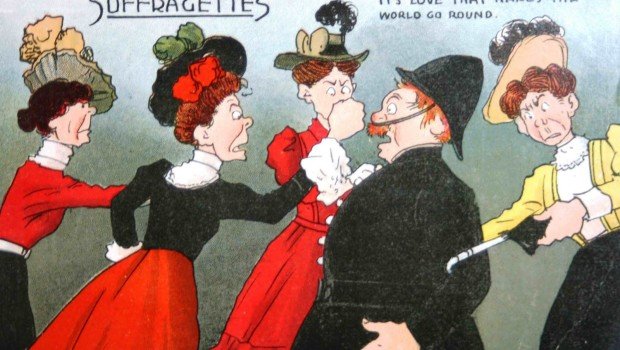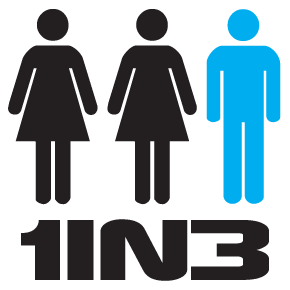1IN3's response to Tertangala op-ed "The One In Three Campaign is Bollocks, and Here is Why"

The One in Three Campaign - a diverse group of male and female professionals – academics, researchers, social workers, psychologists, counsellors, lawyers, health promotion workers, trainers and survivor/advocates - would like to respond to just a few of the false and misleading claims made in Nicole Archer's op-ed "The One In Three Campaign is Bollocks, and Here is Why" (May 20th).
The author claims that 1IN3 is essentially a "campaign against efforts to address men’s violence against women" and that we "constantly undermine campaigns that address men’s violence against women." There is absolutely no evidence to support such a claim. Please read our website and do a thorough Google search. If you have such evidence, please cite it. Please read the Misinformation page of our website in its entirety. It clearly states "The One in Three Campaign is fully supportive of all genuine programs designed to protect women and children from violence. We are simply seeking similar protection for men and boys and asking that the vast majority who are not violent are no longer tarred with the brush of violent males."
The author claims we cite the Australian Bureau of Statistic’s 2006 Personal Safety Survey (PSS) and "family conflict" studies as our main sources. This is also quite untrue. We cite the 2012 Personal Safety Survey along with 20 other reputable studies that include other community surveys, crime, police, homicide, hospital, and protection order statistics, all demonstrating that one in three victims of family violence is male. For example, the NSW Auditor General found that 34% (more than one in three) domestic and family violence incidents recorded by Police in 2010 involved male victims and 30% (almost one in three) involved female perpetrators.
As the only national campaign advocating for male victims of family violence, we are quite aware of the shortcomings of the ABS PSS. All types of research have limitations, but when used together they provide useful data which help us to understand the entire picture of family violence. Despite its problems, the PSS is widely acknowledged to be the best indicator we have of the levels of domestic and family violence in Australia by every significant government and NGO in the sector: ANROWS, White Ribbon, Our Watch, etc. For example, ANROWS relies almost completely on ABS PSS data for it's Fact Sheet on Key Statistics on Violence Against Women. If the data can be legitimately used by these respected organisations, it can also be used by advocates for male victims of family violence.
Even those studies that are "act based" like the PSS can provide useful data. For example, on the issue of self-defence, another "act based" study, the Young People and Domestic Violence survey found the following about young people's experience of witnessing physical domestic violence between their parents: 14.4% of young people reported that this violence was perpetrated both by the male against the female and the female against the male; 9.0% reported that violence was perpetrated against their mother by her male partner but that she was not violent towards him; and 7.8% reported that violence was perpetrated against their father by his female partner but that he was not violent towards her. We don't know how much of the mutual violence was committed in self-defence, but we do know that a significant amount of violence was unilaterally perpetrated by both male and female perpetrators.
The author almost got it right when she stated that we claim that "one male is a victim of domestic homicide every 10 days". If she had looked at our website she would have seen that we actually state the following:
"75 males were killed in domestic homicide incidents between 2008-10. This equates to one death every 10 days." The Australian Institute of Criminology source is referenced and can be easily checked. The figures are for Australia (not NSW).
The author omitted the following male victims of family violence from the NSW Coroner's report:
• two cases where a man was killed by his female intimate partner and there had been physical violence in the relationship perpetrated by both parties, but there was no clear historical pattern of coercion and control evident.
• Other cases where a woman killed her partner or ex-partner such as this one.
• 16 men who were killed by a relative/kin in a domestic violence context.
• 30 boys who were killed by a parent in a domestic violence context.
The author claims that 1IN3 "is not a campaign for male victims of domestic violence" by listing a series of erroneous claims:
• It claims that we do not mention violence against males by other males or domestic violence in same sex relationships. Please have a look at our website and our submissions to government inquiries - we mention it regularly, both in the context of gay male relationships and violence perpetrated by family members such as parents, siblings, etc.
• It claims that male victims are five times more likely to be assaulted by a male than by a female. There is no evidence to support this claim. The robust data cited on our website shows that the vast majority (94%) of perpetrators of intimate partner violence against males are female. There is little Australian data available on broader family violence, but what data we do have shows that other family members who perpetrate violence against males are just as likely to be female as male.
• It correctly claims that we use the term "family violence", but then claims that we imply that all of these men are victims of domestic violence. There is absolutely no evidence that we have ever done such a thing.
• It claims we "twist statistics for the sole purpose of detracting attention away from female victims, and to make the numbers of male victims seem greater". Please provide examples of how the statistics on our website are "twisted" and evidence that anything we do is designed to "detract attention away from female victims". If we have made any errors we will correct them immediately - we are only human.
We don't dispute that men are most at risk of physical violence from other males in public, however the author's claim that this is also the case in the home is baseless. Please provide evidence to support such a claim.
The author claims that we "downplay one group’s suffering in order to prove that Men are Truly the Ones Who Suffer". This is categorically untrue. We have never downplayed the suffering of any group or claimed that men suffer from family violence at greater rates or with greater effect than do women. In fact the name of our campaign clearly acknowledges that women suffer from family violence at rates twice as high as men. We simply ask that the significant minority of victims who are male receive a modicum of acknowledgement, services and support. We have consciously avoided making the issue "a case of men vs. women" over the five years that we have been running the Campaign. Our mantra has been simply "men can be victims too". It is not a zero sum game - our society has the capacity to support all victims of family violence, whether men, women or children - just as we support all victims of cancer, or any number of other impacts upon people's health and wellbeing.
We would ask readers to read the report of our activities and successes over the first 5 years of operation and decide for themselves whether we are serious advocates for male victims of family violence or not.
